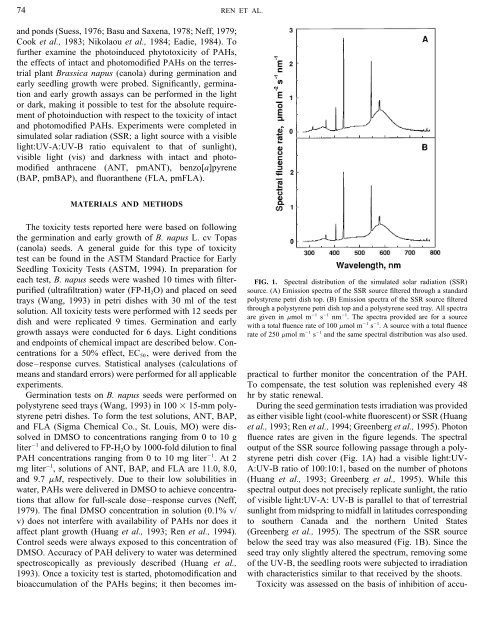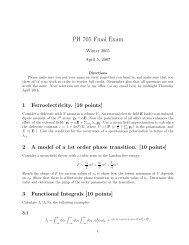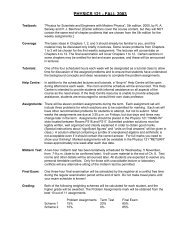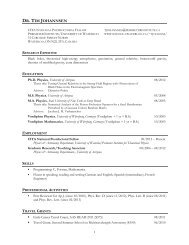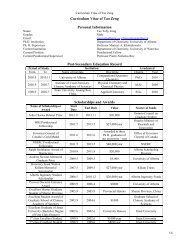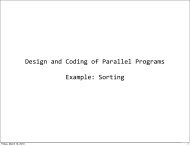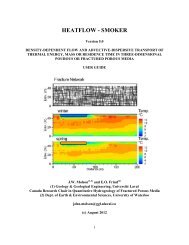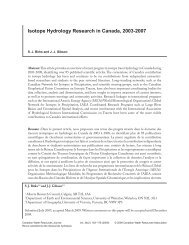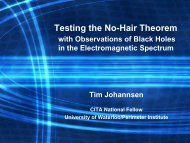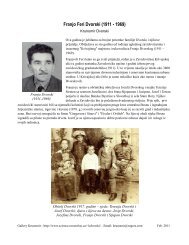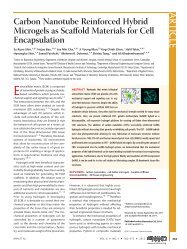45. Ren, L., Zeiler, L.F., Dixon, D.G. and Greenberg, B.M. 1996 ...
45. Ren, L., Zeiler, L.F., Dixon, D.G. and Greenberg, B.M. 1996 ...
45. Ren, L., Zeiler, L.F., Dixon, D.G. and Greenberg, B.M. 1996 ...
Create successful ePaper yourself
Turn your PDF publications into a flip-book with our unique Google optimized e-Paper software.
74 REN ET AL.<br />
<strong>and</strong> ponds (Suess, 1976; Basu <strong>and</strong> Saxena, 1978; Neff, 1979;<br />
Cook et al., 1983; Nikolaou et al., 1984; Eadie, 1984). To<br />
further examine the photoinduced phytotoxicity of PAHs,<br />
the effects of intact <strong>and</strong> photomodified PAHs on the terrestrial<br />
plant Brassica napus (canola) during germination <strong>and</strong><br />
early seedling growth were probed. Significantly, germination<br />
<strong>and</strong> early growth assays can be performed in the light<br />
or dark, making it possible to test for the absolute requirement<br />
of photoinduction with respect to the toxicity of intact<br />
<strong>and</strong> photomodified PAHs. Experiments were completed in<br />
simulated solar radiation (SSR; a light source with a visible<br />
light:UV-A:UV-B ratio equivalent to that of sunlight),<br />
visible light (vis) <strong>and</strong> darkness with intact <strong>and</strong> photomodified<br />
anthracene (ANT, pmANT), benzo[a]pyrene<br />
(BAP, pmBAP), <strong>and</strong> fluoranthene (FLA, pmFLA).<br />
MATERIALS AND METHODS<br />
The toxicity tests reported here were based on following<br />
the germination <strong>and</strong> early growth of B. napus L. cv Topas<br />
(canola) seeds. A general guide for this type of toxicity<br />
test can be found in the ASTM St<strong>and</strong>ard Practice for Early<br />
Seedling Toxicity Tests (ASTM, 1994). In preparation for<br />
each test, B. napus seeds were washed 10 times with filter- FIG. 1. Spectral distribution of the simulated solar radiation (SSR)<br />
purified (ultrafiltration) water (FP-H 2 O) <strong>and</strong> placed on seed source. (A) Emission spectra of the SSR source filtered through a st<strong>and</strong>ard<br />
trays (Wang, 1993) in petri dishes with 30 ml of the test polystyrene petri dish top. (B) Emission spectra of the SSR source filtered<br />
solution. All toxicity tests were performed with 12 seeds per through a polystyrene petri dish top <strong>and</strong> a polystyrene seed tray. All spectra<br />
are given in mmol m 01 s 01 nm 01 . The spectra provided are for a source<br />
dish <strong>and</strong> were replicated 9 times. Germination <strong>and</strong> early with a total fluence rate of 100 mmol m 01 s 01 . A source with a total fluence<br />
growth assays were conducted for 6 days. Light conditions rate of 250 mmol m 01 s 01 <strong>and</strong> the same spectral distribution was also used.<br />
<strong>and</strong> endpoints of chemical impact are described below. Concentrations<br />
for a 50% effect, EC 50 , were derived from the<br />
dose–response curves. Statistical analyses (calculations of<br />
means <strong>and</strong> st<strong>and</strong>ard errors) were performed for all applicable practical to further monitor the concentration of the PAH.<br />
experiments.<br />
To compensate, the test solution was replenished every 48<br />
Germination tests on B. napus seeds were performed on hr by static renewal.<br />
polystyrene seed trays (Wang, 1993) in 100 1 15-mm polystyrene<br />
During the seed germination tests irradiation was provided<br />
petri dishes. To form the test solutions, ANT, BAP, as either visible light (cool-white fluorescent) or SSR (Huang<br />
<strong>and</strong> FLA (Sigma Chemical Co., St. Louis, MO) were dissolved<br />
et al., 1993; <strong>Ren</strong> et al., 1994; <strong>Greenberg</strong> et al., 1995). Photon<br />
in DMSO to concentrations ranging from 0 to 10 g fluence rates are given in the figure legends. The spectral<br />
liter 01 <strong>and</strong> delivered to FP-H 2 O by 1000-fold dilution to final output of the SSR source following passage through a poly-<br />
PAH concentrations ranging from 0 to 10 mg liter 01 . At 2 styrene petri dish cover (Fig. 1A) had a visible light:UVmg<br />
liter 01 , solutions of ANT, BAP, <strong>and</strong> FLA are 11.0, 8.0, A:UV-B ratio of 100:10:1, based on the number of photons<br />
<strong>and</strong> 9.7 mM, respectively. Due to their low solubilities in (Huang et al., 1993; <strong>Greenberg</strong> et al., 1995). While this<br />
water, PAHs were delivered in DMSO to achieve concentrations<br />
spectral output does not precisely replicate sunlight, the ratio<br />
that allow for full-scale dose–response curves (Neff, of visible light:UV-A: UV-B is parallel to that of terrestrial<br />
1979). The final DMSO concentration in solution (0.1% v/ sunlight from midspring to midfall in latitudes corresponding<br />
v) does not interfere with availability of PAHs nor does it to southern Canada <strong>and</strong> the northern United States<br />
affect plant growth (Huang et al., 1993; <strong>Ren</strong> et al., 1994). (<strong>Greenberg</strong> et al., 1995). The spectrum of the SSR source<br />
Control seeds were always exposed to this concentration of below the seed tray was also measured (Fig. 1B). Since the<br />
DMSO. Accuracy of PAH delivery to water was determined seed tray only slightly altered the spectrum, removing some<br />
spectroscopically as previously described (Huang et al.,<br />
1993). Once a toxicity test is started, photomodification <strong>and</strong><br />
bioaccumulation of the PAHs begins; it then becomes im-<br />
of the UV-B, the seedling roots were subjected to irradiation<br />
with characteristics similar to that received by the shoots.<br />
Toxicity was assessed on the basis of inhibition of accu-


